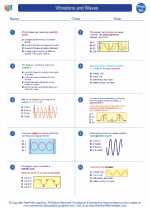Hyphae in Biology
Hyphae are the branching, thread-like structures that make up the mycelium of a fungus. They are the main mode of vegetative growth in fungi and are responsible for the absorption of nutrients from the environment. Hyphae play a crucial role in the life cycle and ecological function of fungi.
Structure of Hyphae
Hyphae are typically long, slender, and tubular structures. They can be septate, meaning they are divided into compartments by cross-walls called septa, or nonseptate, where the cytoplasm flows freely throughout the hypha. The tip of a growing hypha is called the apical tip, and it is responsible for the extension of the hyphae.
Functions of Hyphae
Hyphae serve several important functions in fungi:
- Nutrient Absorption: Hyphae secrete enzymes that break down organic matter, allowing the fungus to absorb essential nutrients from the environment.
- Reproduction: In many fungi, specialized hyphae are involved in the production of spores, which are essential for the dispersal and reproduction of the fungus.
- Mycorrhizal Associations: Some fungi form symbiotic relationships with plant roots, forming specialized hyphae called mycorrhizae that facilitate the exchange of nutrients between the fungus and the host plant.
Study Guide for Hyphae
To understand hyphae in depth, consider the following study points:
- Compare and contrast septate and nonseptate hyphae in terms of structure and function.
- Investigate the role of hyphae in the decomposition of organic matter and nutrient cycling in ecosystems.
- Explore the different types of mycorrhizal associations formed by fungi and the ecological significance of these symbiotic relationships.
- Examine the growth patterns and regulatory mechanisms involved in the extension of hyphal tips.
By delving into these study points, you can gain a comprehensive understanding of the structure, function, and ecological importance of hyphae in the fungal kingdom.
[Hyphae] Related Worksheets and Study Guides:
.◂Physics Worksheets and Study Guides High School. Vibrations and Waves

 Worksheet/Answer key
Worksheet/Answer key
 Worksheet/Answer key
Worksheet/Answer key
 Worksheet/Answer key
Worksheet/Answer key
